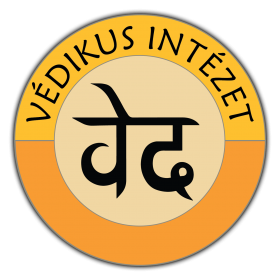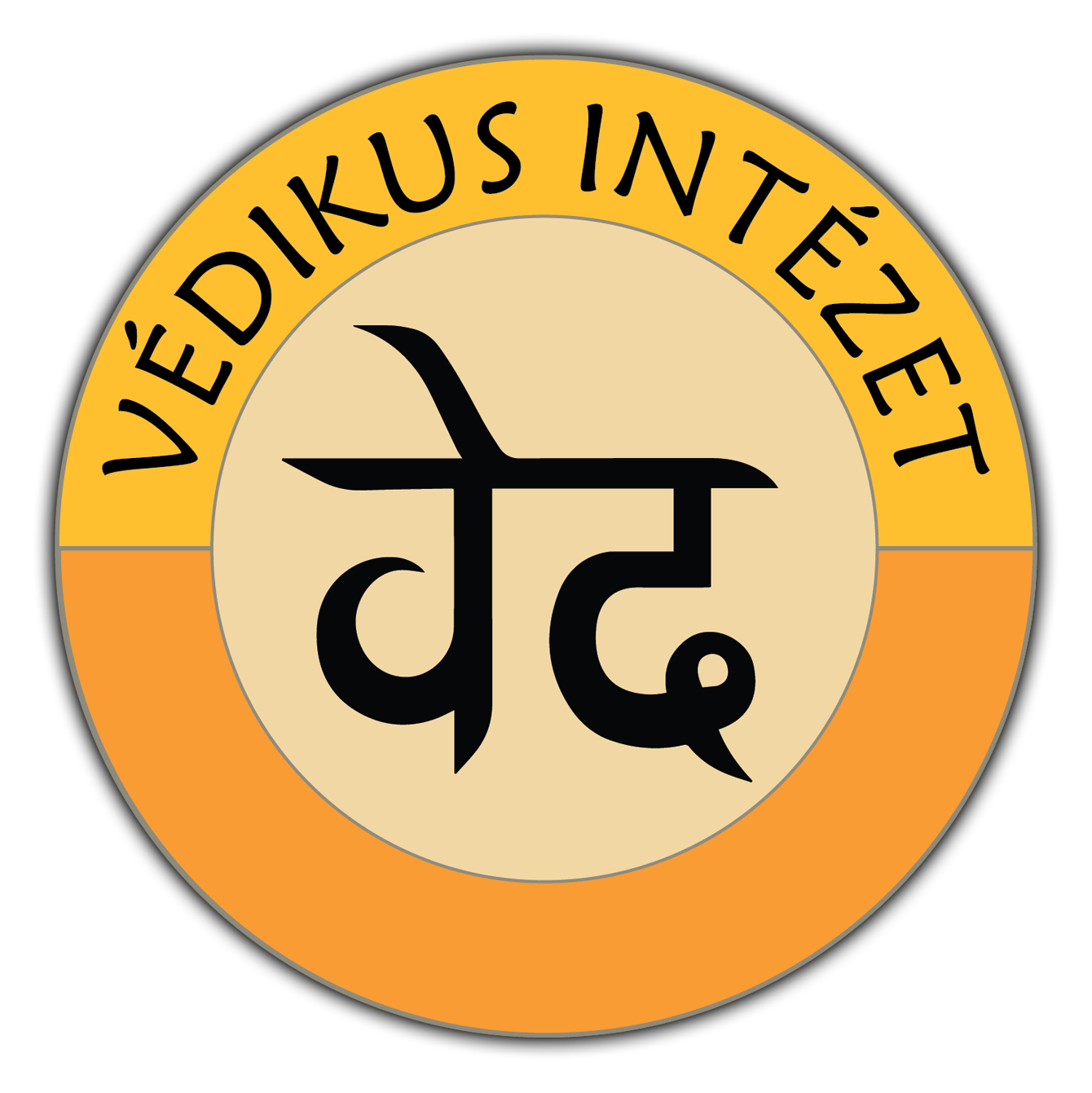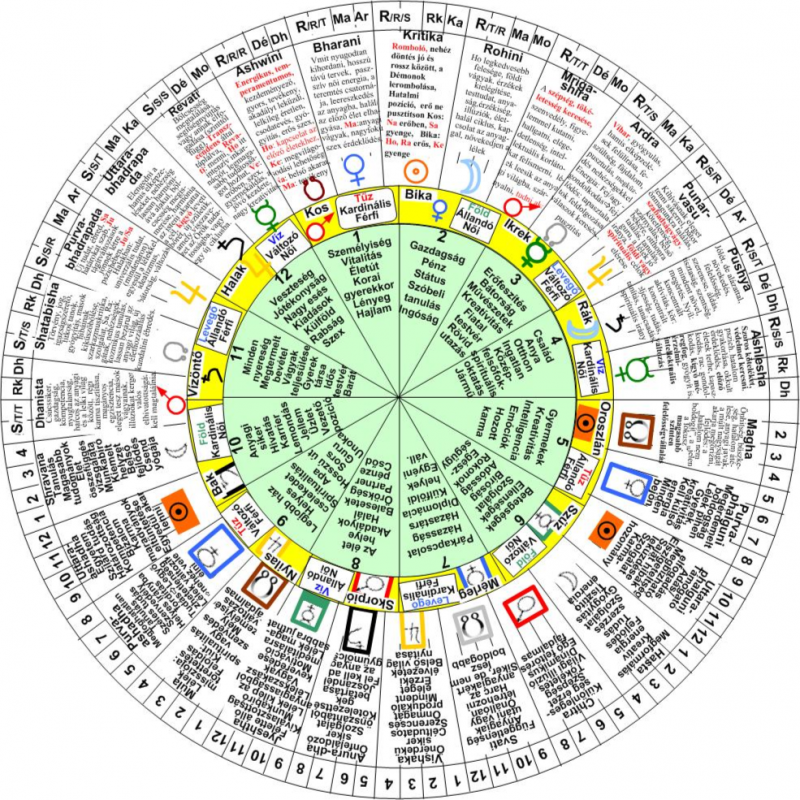A PREMISE, INSTEAD OF AN INTRODUCTION
Let’s make it clear in the beginning that the classes are cheerful and devoid of stress. The instructor usually gives some homework that requires knowledge gained from the previous lessons. The student can freely decide to prepare it or not. There is no grading, A or F, black or red mark… Since the training’s primary goal is the expansion of self-knowledge, lessons are assigned to fulfill this intent. The student’s self-knowledge will also develop, if she will pay attention to the others’ chart analyses during the lessons. From these small pieces, self-knowledge will slowly come together like a jigsaw puzzle. It is good for the student to decide already at the onset what her goal is by completing the course. Expanding self-knowledge? Deepening in Vedic astrology, because it interests me? Unburdening the lives of those close to me by monitoring, analysing their charts and warning them in advance of problematic times? Would you like to become a Vedic astrologer, analyzing the fates of people and providing advice? I could go on… If somebody doesn’t know it in the beginning, but it dawns on her at the advanced course, for instance, that „I would like to be an astrologer!”, then there’s catch-up training, where missed excercises and skipped knowledge can be made up for.
Imagine that a medical doctor examines, diagnoses, prescribes medicine and therapy to each of his patients by using a medical encyclopedia or information deposited to a distant server’s central database. In astrology this would correspond to the scenario when one would crib the total impact of star signs, planets, houses, Moon houses, combinations and interactions in a similar way. Conceivably, time and energy spent on this would be way more than needed and it would be also a risky business. In Vedic (as well as in other types of) astrology, the same planetary position can denote different meanings depending on the spiritual development of the native. It is essential to learn the basics at a high level to practice the profession of astrology.
After this short intro, we can proceed to discuss what will happen in the courses, in an average class.
Basic training:
- After quickly reviewing what we learned last time, there will be fast questions by the teacher and ready replies by the students. If the process gets stuck, another student will take it over, or the teacher will help the student who got stuck with questions and/or information. Everyone is involved in the shared work.
- Then, we will have a look at the homework. E.g. what is the direct or indirect effect of Mars and Saturn on the 11th house in the given chart? If there was no homework, the tutor will come up with a current astrological problem, and based on what was learned in the previous lessons, we will analyze it together.
- If one of the students has an urgent problem (any student can indicate this at the beginning of the class), the tutor will analyze the relevant part of the chart, and the members can contribute to the analysis.
- Next: new parts of the curriculum. The teacher introduces the new knowledge and then we will go through all members’ charts and will investigate the horoscopes together in light of the new material. After the 2nd or 3rd chart, it will be more and more the students, who will do the analysis under the teacher’s supervision. This part of the learning curve will contribute to developing the students’ self-knowledge.
- Final part: guided by the teacher, students will go through the new pieces of information once more. The tutor may include a few new charts for analysis to consolidate new information. Homework may be assigned.
- Questions and/or analyses at the end: now we can take care of the students’ not urgent problems (e.g. personal problems or analyzing a chart of a family member)
Advanced training:
- Participants of the advanced training will write papers at home, which are usually works of a composite nature. At the beginning of the lessons, a student will present her fresh work. Often, these are partial analyses and the complete analysis is distributed among the members of the group. When the last presentation is over, the analysis will be complete. Alternatively, the participants get similar tasks to do on different charts and we will listen to the analysis of a few of these. For example, a task could be to analyze the effect of Vimshottari dasha’s (life clock) Jupiter main period on all the sub-periods in a chart, taking into account the transits. A test can consist of the summary of the past period’s knowledge. At the end of the analysis, everyone can express her opinion. The teacher will emphasize the positive developments, but will also point out insufficiencies.
- Next, we will learn new material that will involve lots of small practical examples and joint tasks. For instance, what is the effect of Mars mahadasha plus Sun and Moon antardasha on the native?
- Joint exercise to learn the new material.
- Giving homework.
- Exciting joint chart analysis with the tutor’s supervision.
Training of astrologer candidates:
- Short analysis of 3 unknown charts using viewpoints specified by the teacher.
- Learning the next part of a new analysis technique and practicing it using interactive methods.
- Half an hour of astrology ethics. What are we allowed to say during an analysis and what not? How does secrecy bind us? It will be illustrated by various instances.
- Astrology tidbits: chart analysis of a famous person (politician, actor, artist, etc) according to the suggested methods and viewpoints
- Giving new homework.
Students will receive interactive electronic notes and various aids to deepen their astrology knowledge.
As an example, here’s the Vedic wheel that helps one understand the interaction of star signs, planets, houses and Moon houses. It will provide support for students until they reach the necessary Vedic knowledge level. As for now, I’m not giving out more info on the Vedic wheel.


 Magyar
Magyar
